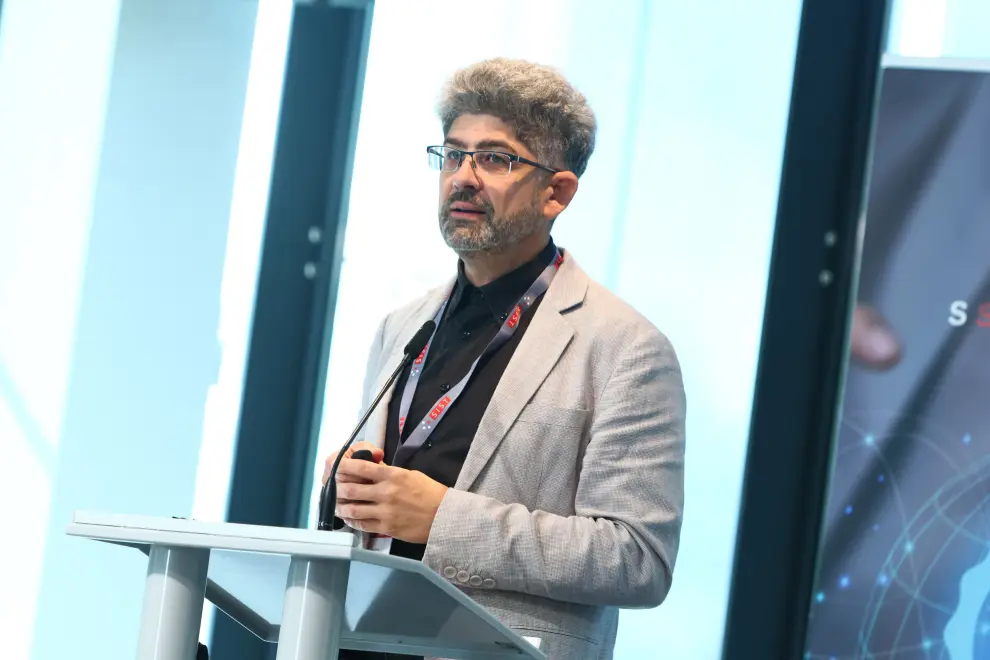SkyLabs to send over 150 products into space in three years
SkyLabs, a Slovenian space technology oriented company that focuses on providing miniaturized on-board data handling solutions, has announced the release of a new cutting-edge communication subsystem NANOlink-S. In the next three years they expect to have more than 150 products in space, with the third TRISAT satellite scheduled to be launched soon.
The story of SkyLabs dates back to 2008 when the European Space Agency (ESA) representatives visited Slovenia for the first time.
"During their stop at the University of Maribor, they visited the laboratory of Prof. Dr. Iztok Kramberger and recognized the potential for the development of space technologies," CEO Tomaž Rotovnik explains.
From first successful task to company
An unofficial team of SkyLabs was formed in 2009, mainly consisting of postdoctoral students. The team began working on their first space project, known as the European Student Moon Orbiter (ESMO).
ESMO was the fourth mission in the ESA's educational satellite programme. SkyLabs' team was responsible for developing the On-Board Data Handling subsystem to ensure smooth transmission of telemetry and telecommands between individual subsystems on the satellite.
"The successful completion of this work elevated the team's ambitions. They were already following trends in the space industry and identified a potential market niche in the field of reliable miniaturized electronic subsystems for small satellites," Rotovnik says. The core SkyLabs team officially founded the company in 2014.
SkyLabs operates in the so-called "upstream" segment, specializing in the production of electronic components that form the basis of every satellite platform.
In general, their products can be divided into five categories: communication, navigation, power subsystems, on-board high-performance computer segments with artificial intelligence support, and terminal equipment segments supporting various analogue/digital sensors and actuators.
Leading niche market player
"We are a leading player in the niche market of small satellite platforms. We demonstrate our capabilities primarily through the fact that our space technology solutions are flight-proven," Rotovnik says.
They have launched all their products as technological demonstrations on satellites TRISAT and TRISAT-R into space, where they continue to operate despite radiation and for a longer time frame than planned.
"This confirms three essential characteristics of our products: miniaturization, product reliability and exceptional resilience to radiation events," the CEO says.
Their goal is to provide advanced technologies that will shape the future of space engineering. They have customers worldwide and a presence on almost every continent, but Europe remains their most important market.
SkyLabs CEO Tomaž Rotovnik. Photo: SkyLabs
"With our technological solutions, we currently equip eight different constellations, and we expect to have more than 150 SkyLabs products in space within the next three years," says Rotovnik.
Their latest subsystem, NANOlink-S, was developed in collaboration with ESA. It represents a significant step forward in satellite communication technology, offering improved communication security without compromising performance or reliability.
The initial models of NANOlink-S have already been delivered to customers and this subsystem will be a crucial payload on the upcoming TRISAT-S mission.
Third nanosatellite to be launched this year
There are already two Slovenian TRISAT satellites orbiting the Earth and soon they will be accompanied by the third. The TRISAT-S satellite (S standing for Security) is scheduled to be launched this year on a German Spectrum rocket.
"The launch is planned for the first quarter of the year, although the exact date has not been determined. As we have experienced with previous launches, this time frame may be subject to change, but it is highly likely that the launch will still take place in 2024," Rotovnik explains.
TRISAT-S is designed to test secure communication between the nanosatellite and the ground station. "With the TRISAT-S satellite, we are addressing a new global trend in the utilization of Very Low Earth Orbits (VLEO), which is also becoming one of the key directions for the European defence industry," says Rotovnik.
Robot adventurer
SkyLabs is also developing a robot adventurer SARA, an unmanned vehicle resembling a spider which can be used for exploration tasks on diverse terrains.
Last year, after 18 months of planning and development and eight months of production, they received the prototype of their intelligent chip, intended for use in space. Among their major achievements is also the PicoSky processor.
The use of these technologies enables the construction of equally reliable small satellites compared to much larger and more expensive satellite platforms missions.
"This addresses or contributes to the technological independence of the EU, supporting the bloc's efforts for greater autonomy and self-sufficiency in technology. The goal of this initiative is to reduce dependence on non-European technology companies, especially those from the United States and China, and strengthen the EU's position in the global technological environment," says Rotovnik.



